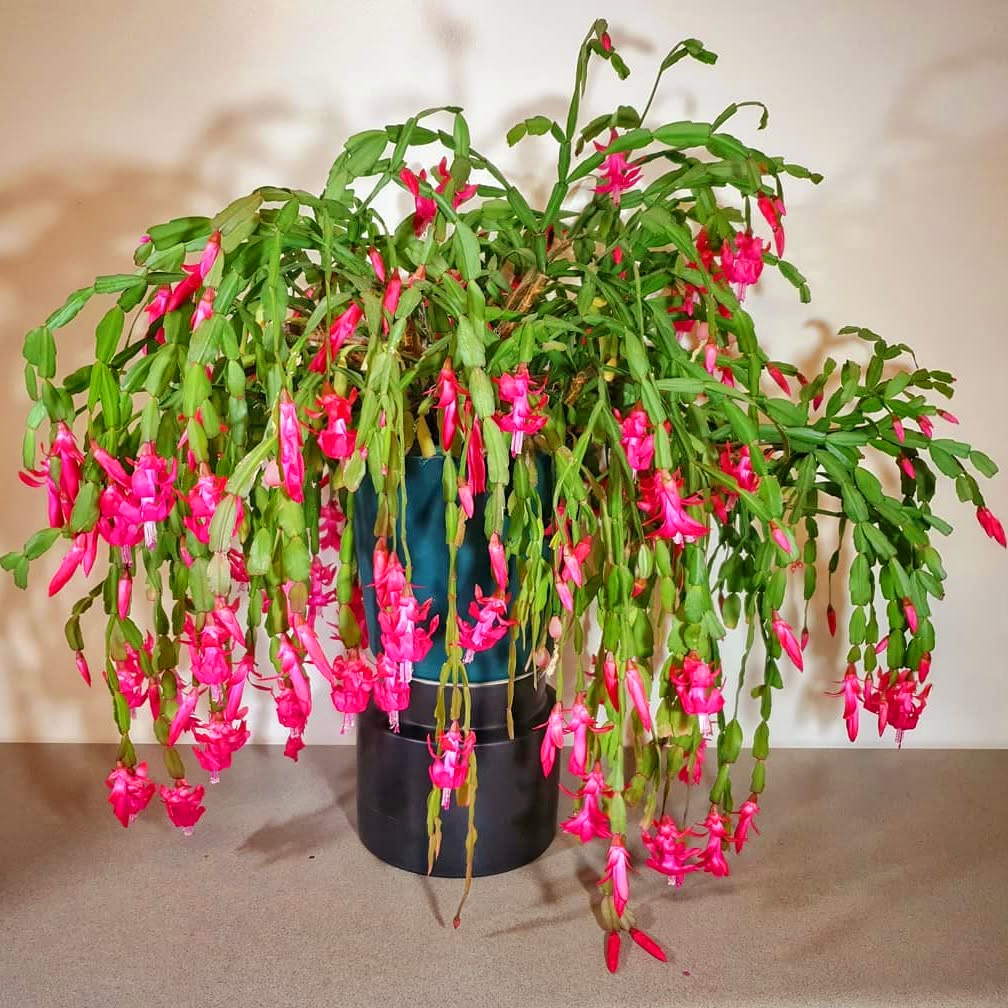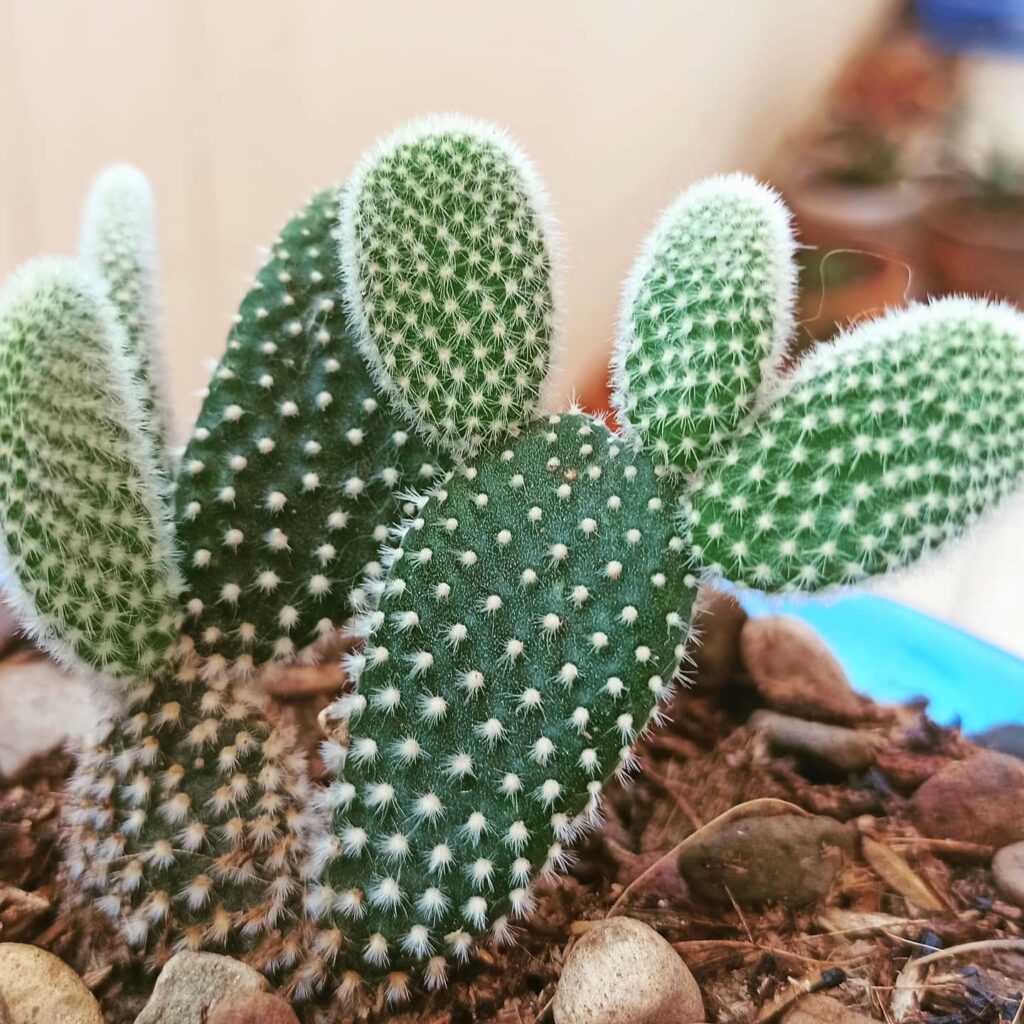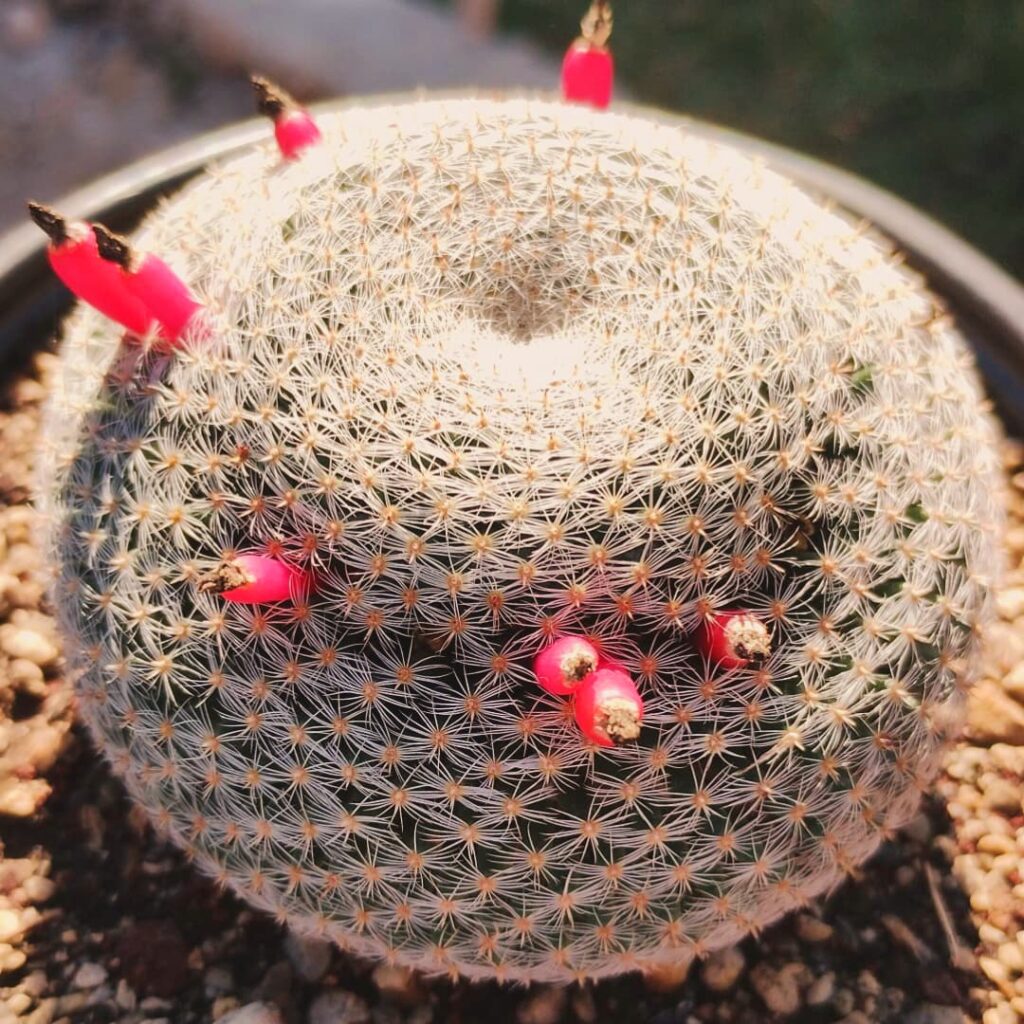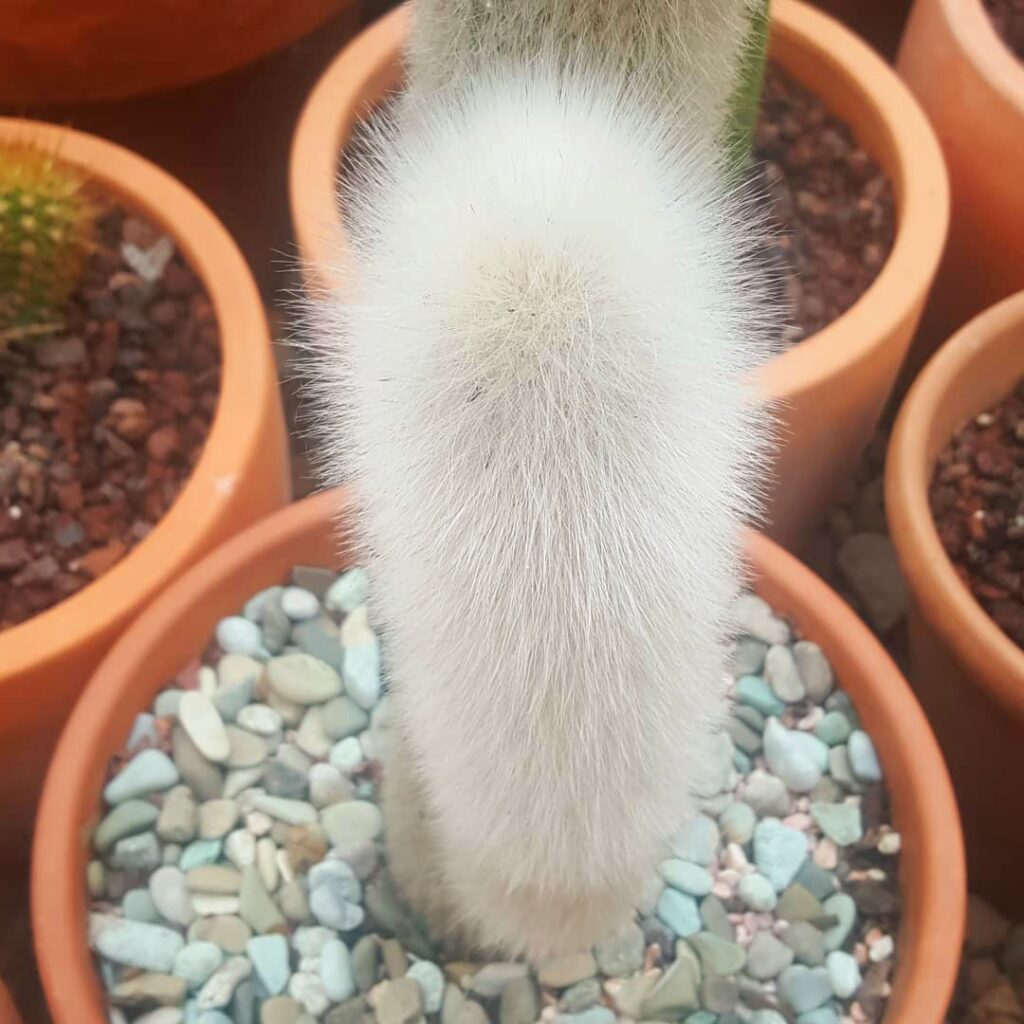Have you ever wondered why indoor cactus plants have become the darlings of modern home decor? You’ll find these resilient desert dwellers adapting beautifully to indoor environments, offering an impressive array of shapes, sizes, and even unexpected bursts of color. Whether you’re drawn to the whimsical grafted Moon Cactus with its neon-bright crown or the architectural presence of a stately Barrel Cactus, there’s a perfect specimen for every space and style preference. From pet-friendly varieties to show-stopping statement pieces, let’s explore the most enthralling indoor cactus types that’ll transform your living space into a desert-inspired sanctuary.
Contents
- 1 Moon Cactus
- 2 Bunny Ears Cactus
- 3 Barrel Cactus
- 4 Christmas Cactus
- 5 Star Cactus
- 6 Old Lady Cactus
- 7 Rat Tail Cactus
- 8 Bishop’s Cap
- 9 Blue Torch Cactus
- 10 Angel Wings Cactus
- 11 Saguaro Cactus
- 12 Pincushion Cactus
- 13 Fairy Castle Cactus
- 14 Organ Pipe Cactus
- 15 Golden Ball Cactus
- 16 Easter Cactus
- 17 Chin Cactus
- 18 Thimble Cactus
- 19 Ladyfinger Cactus
- 20 Fishbone Cactus
- 21 Silver Torch Cactus
- 22 African Milk Tree
- 23 Powder Puff Cactus
- 24 Rainbow Hedgehog Cactus
- 25 String of Buttons
- 26 Frequently Asked Questions
- 26.1 Can Different Types of Indoor Cacti Be Planted Together in One Pot?
- 26.2 How Do You Identify Signs of Root Rot in Indoor Cactus Plants?
- 26.3 Why Do Some Indoor Cacti Suddenly Stop Growing for Long Periods?
- 26.4 What Natural Pest Control Methods Work Best for Indoor Cactus Plants?
- 26.5 Should Indoor Cacti Be Repotted During Their Growing or Dormant Season?
Moon Cactus

The Moon Cactus (Gymnocalycium mihanovichii) consists of two distinct species grafted together, with the colorful mutant scion lacking chlorophyll growing atop a green rootstock host. You’ll find that successful grafting requires precise technique to join the vascular tissues. The scion’s vibrant variegation comes in red, yellow, orange, or pink. Without this grafting process, the chlorophyll-deficient top portion couldn’t survive independently.
Bunny Ears Cactus

Known scientifically as Opuntia microdasys, Bunny Ears Cactus earned its common name from distinctive pairs of oval-shaped pads that resemble rabbit ears. You’ll find this Mexican native grows up to 2-3 feet tall, producing new pads annually. The bunny ears care requirements include bright indirect light, well-draining soil, and minimal watering. Its growth habits are slow but steady, with clusters forming gradually.
Barrel Cactus

Among the most distinctive columnar desert plants, Ferocactus species comprise the popular Barrel Cactus group, which features a cylindrical to spherical growth form reaching heights of 3-10 feet. You’ll appreciate its compact growth habit in your indoor space, while its drought tolerant characteristics make it an ideal low-maintenance specimen. This succulent’s prominent ribs and fierce spination provide striking architectural appeal.
Christmas Cactus

Moving from desert-dwelling cacti to tropical specimens, Schlumbergera x buckleyi (Christmas Cactus) represents a distinct departure in both form and care requirements. You’ll find this epiphytic succulent thrives in environments similar to poinsettia compatibility zones, requiring 50-60% humidity and indirect light. Christmas cactus care requirements include well-draining soil, temperatures between 60-70°F, and reduced watering after blooming.
Star Cactus

The star cactus (Astrophytum asterias) showcases a distinctive geometric pattern with eight symmetrical ribs forming a star-like appearance. You’ll find this slow-growing specimen thrives in well-draining soil with minimal water requirements. Its exceptional drought tolerance makes it ideal for busy plant enthusiasts. Growing conditions should include bright, indirect light and temperatures between 70-80°F (21-27°C) for ideal development.
Old Lady Cactus

Known scientifically as Mammillaria hahniana, your Old Lady Cactus earns its nickname from the dense white hair-like spines covering its cylindrical body. This slow growing species displays a compact growth habit and produces a ring of pink flowers at maturity.
- Reaches only 6 inches in height at full size
- Develops clustered offsets around the main stem
- Thrives in bright, indirect light with minimal watering
Rat Tail Cactus

Among trailing cacti species, Aporocactus flagelliformis (Rat Tail Cactus) produces distinctive pendant stems that can grow up to 6 feet in length. You’ll find rat tail cactus care straightforward when providing bright, indirect light and well-draining soil. When growing rat tail cactus, maintain temperatures between 50-75°F and water sparingly. The species rewards your efforts with vibrant magenta blooms in spring.
Bishop’s Cap

Unlike trailing species, Astrophytum myriostigma (Bishop’s Cap) displays a distinctive geometric form with typically 4-5 prominent vertical ribs that create its characteristic mitre-shaped appearance.
You’ll find this specimen exhibits unusual growth patterns ideal for cultivating unique shapes in your collection.
- Produces white felt-like spots (areoles) across the epidermis
- Develops yellow flowers at maturity, blooming at stem apex
- Maintains slow, columnar growth reaching 40 cm in height
Blue Torch Cactus

The Pilosocereus pachycladus (Blue Torch Cactus) stands out with its striking columnar form and distinctive blue-green epidermis covered in white areoles. You’ll find its minimal light requirements make it adaptable to indoor environments, while its drought tolerant nature allows for extended periods between waterings. This Brazilian native’s vertical growth pattern reaches up to 33 feet in ideal conditions, though it stays smaller indoors.
Angel Wings Cactus

Scientifically known as Opuntia albispina, Angel Wings Cactus grows out from its base with flattened, oval-shaped pads covered in white spines. Its unique growth habits include vertical branching, reaching heights of 3-4 feet indoors.
Care requirements include:
- Well-draining cactus soil with pH 6.0-7.5
- Bright, indirect sunlight for 4-6 hours daily
- Water only when top 2 inches of soil are completely dry
Saguaro Cactus

Moving from the compact Angel Wings to a true giant of the desert, Carnegiea gigantea (Saguaro Cactus) stands as North America’s largest native cactus species. You’ll notice significant size variation as specimens mature, reaching heights of 40-60 feet. For indoor cultivation, you’ll need to provide specific growth requirements: bright, direct sunlight, temperatures between 70-100°F, and extremely well-draining soil with minimal watering.
Pincushion Cactus

Among the most alluring members in the Mammillaria genus, Pincushion cacti comprise over 200 species characterized by their distinctive tubercles and radial spine patterns. When selecting pincushion cactus varieties for your indoor collection, you’ll find they’re remarkably adaptable.
- Most species thrive in bright, indirect light with minimal watering
- Pincushion cactus care requirements include well-draining soil and protection from frost
Fairy Castle Cactus

The enchanting appearance of Acanthocereus tetragonus ‘Fairy Castle’ makes it an alluring addition to any indoor succulent collection. You’ll recognize this cultivar by its distinctive shape, featuring multiple branching stems with five angular ribs that resemble turrets of a castle. Its easy care requirements include bright, indirect light and well-draining soil. You’ll only need to water when the substrate is completely dry.
Organ Pipe Cactus

Just as impressive as its fairytale cousin, Stenocereus thurberi (Organ Pipe Cactus) commands attention with its columnar growth pattern and multiple stems emerging from a single base.
Native to the Sonoran Desert, you’ll find this magnificent succulent thrives in:
- Well-draining soil with pH 6.1-7.8
- Bright, direct sunlight with temperatures 70-100°F
- Minimal watering schedule; allow soil to dry completely between waterings
You can’t go wrong incorporating this architectural specimen into your indoor collection.
Golden Ball Cactus

Parodia leninghausii, commonly known as Golden Ball Cactus, features distinctive golden-yellow spines that radiate uniformly across its globular to cylindrical body. You’ll notice its appearance characterized by clusters of bright yellow flowers emerging from the crown during spring. Its growth habits include slow vertical development, reaching up to 24 inches in height, while maintaining a columnar shape as it matures.
Easter Cactus

Unlike the spiny appearance of the Golden Ball Cactus, Hatiora gaertneri (Easter Cactus) showcases flattened stem segments with smooth edges and no spines. When providing Easter cactus care, you’ll find these epiphytic plants thrive in bright, indirect light.
- Maintain temperatures between 60-70°F (15-21°C)
- Water thoroughly when top inch of soil feels dry
- Select from varieties like ‘Purple Pride’, ‘Deutsche Kaiserin’, and ‘Crimson Giant’
Chin Cactus

Belonging to the genus Gymnocalycium, the Chin Cactus features distinctive ribbed globular stems with prominent chin-like protrusions beneath each areole. You’ll find numerous chin cactus varieties thriving in bright, indirect light. For ideal chin cactus care requirements, maintain well-draining soil, water sparingly, and provide temperatures between 60-75°F (15-24°C).
Thimble Cactus

The compact Mammillaria gracilis, commonly known as the Thimble Cactus, forms dense clusters of small, cylindrical stems measuring just 1-2 inches (2.5-5 cm) in height. Its remarkable compactness makes it perfect for windowsills and small spaces.
- White spines cover the succulent features, creating a delicate, fuzzy appearance
- Produces pink or cream-colored flowers in spring
- Offsets readily form around the mother plant, creating a miniature forest effect
Ladyfinger Cactus

Mammillaria elongata, widely known as Ladyfinger Cactus, grows in columnar clusters of finger-like stems reaching 6-8 inches (15-20 cm) in height. You’ll find this species thrives in bright, indirect sunlight and well-draining soil. The plant care requirements include minimal watering, allowing soil to dry completely between waterings. Ideal growing conditions maintain temperatures between 70-80°F (21-27°C) with moderate humidity levels.
Fishbone Cactus

Unlike its cylindrical cousin, Disocactus anguliger (Fishbone Cactus) features distinctive zigzag stems that resemble fish skeletons. You’ll find variegated varieties displaying cream-white patterns on their flattened stems. The epiphytic species thrives in ideal lighting conditions with bright, indirect light.
- Produces fragrant, nocturnal white-yellow blooms in autumn
- Requires well-draining epiphytic growing medium
- Tolerates temperatures between 60-80°F (15-27°C)
Silver Torch Cactus

Standing tall and slender, Cleistocactus strausii (Silver Torch Cactus) features dense white spines covering its columnar stems, creating a silvery-white appearance that gives this species its common name. You’ll find different varieties reaching heights of 6-10 feet indoors. Maintenance requirements include well-draining soil, bright indirect light, and minimal watering during winter dormancy. It’s frost-sensitive, so maintain temperatures above 50°F (10°C).
African Milk Tree

The African Milk Tree (Euphorbia trigona) exhibits three distinctive ribbed stems with dark green coloration and features small leaves that emerge along its edges. You’ll need to handle this succulent with caution due to its toxic sap.
- Contains specialized water storage tissue within its stems
- Belongs to Euphorbiceae family, sharing traits with poinsettias
- Requires minimal irrigation due to efficient water retention mechanisms
Powder Puff Cactus

Mammillaria bocasana, commonly known as the Powder Puff Cactus, displays distinctive white, hair-like spines that densely cover its spherical body in a soft, cloud-like formation. You’ll notice its interesting leaf shape manifests as areoles arranged in a spiral pattern. The cactus exhibits unique growth habits, forming clusters of small, globe-shaped stems. It’ll produce pink-to-cream colored flowers in a ring around its crown.
Rainbow Hedgehog Cactus

Unlike its powdery cousin, Echinocereus rigidissimus, commonly known as Rainbow Hedgehog Cactus, showcases vibrant bands of pink, red, and white spines arranged in striking horizontal patterns along its cylindrical stems.
- Native habitat spans Arizona’s Sonoran Desert to Mexico’s mountainous regions
- Requires well-draining soil and minimal watering, allowing soil to dry completely between waterings
- Produces large, funnel-shaped magenta blooms in spring when exposed to proper light conditions

Originally classified as Crassula perforata, String of Buttons features stacked, triangular leaves arranged in opposing pairs along trailing stems, creating a distinctive architectural appearance. You’ll find its ideal growing conditions include bright, indirect light and well-draining soil. The watering requirements are minimal – you’ll want to let the soil dry completely between waterings to prevent root rot.
Frequently Asked Questions
Can Different Types of Indoor Cacti Be Planted Together in One Pot?
Like stars in a desert sky, you can group cacti together if you’re mindful of ideal pot sizes and best soil mixtures. Choose plants with similar water needs and growth rates for successful companionship.
How Do You Identify Signs of Root Rot in Indoor Cactus Plants?
You’ll identify root rot in your cactus by checking for discolored or mushy roots beneath the soil. When you inspect, you’ll notice damp or saturated soil conditions that indicate dangerous fungal development.
Why Do Some Indoor Cacti Suddenly Stop Growing for Long Periods?
Like a hibernating bear, your cactus enters dormancy due to temperature fluctuations and insufficient lighting. You’ll notice growth stalls when these environmental factors don’t meet the plant’s specific photosynthetic and metabolic requirements.
What Natural Pest Control Methods Work Best for Indoor Cactus Plants?
You’ll achieve ideal pest management by introducing beneficial predatory insects like ladybugs and using organic deterrents such as neem oil, while maintaining proper air circulation to prevent common cactus-specific arthropod infestations.
Should Indoor Cacti Be Repotted During Their Growing or Dormant Season?
Like awakening a sleeping giant, you’ll want to repot cacti during active growth in spring. Mix ideal soil with 50% inorganic material, adjust seasonal watering gradually, and you’ll guarantee successful transplanting for your succulent friends.

